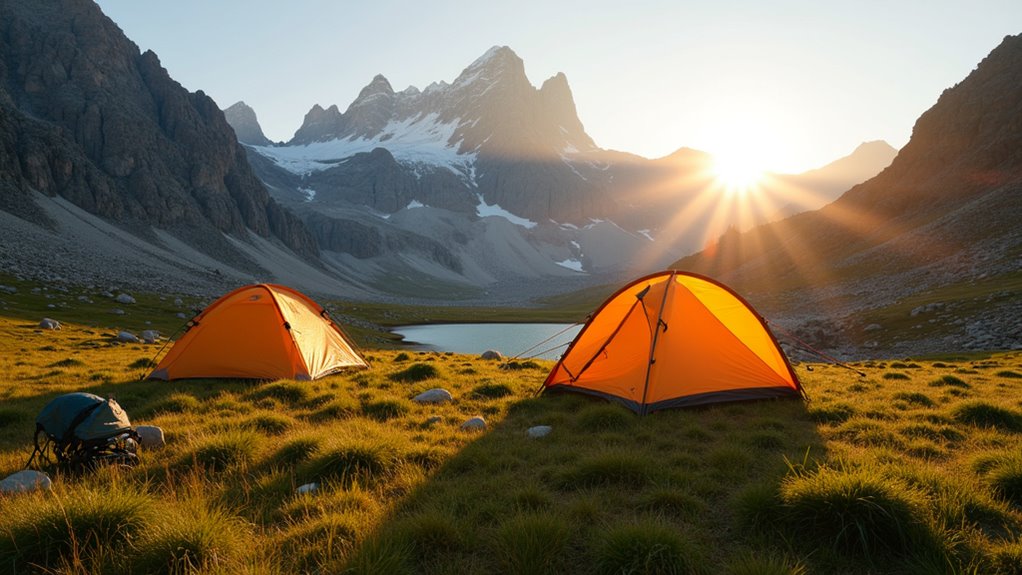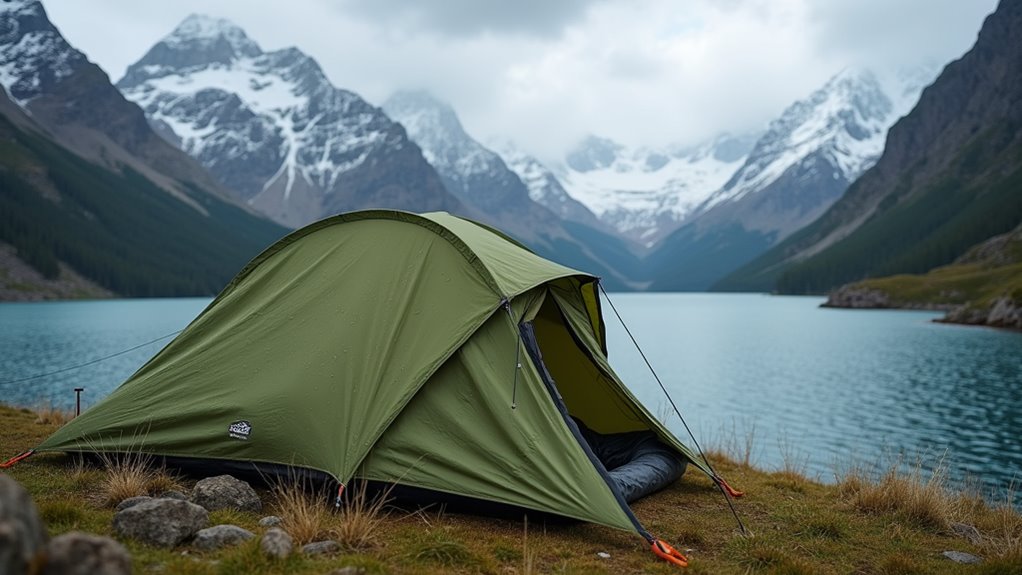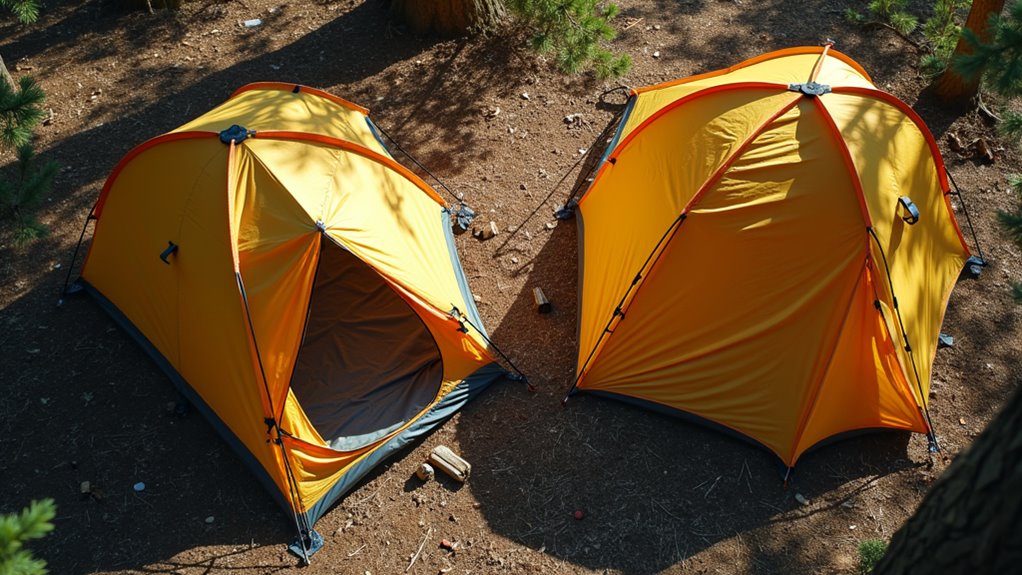Physical Address
304 North Cardinal St.
Dorchester Center, MA 02124
Physical Address
304 North Cardinal St.
Dorchester Center, MA 02124

Wondering which tent features matter most when facing endless options and conflicting reviews that could make or break your camping adventures?
Imagine this: you’re standing in a sporting goods store, staring at dozens of tents ranging from $50 to $500, wondering which one won’t leave you soaked during your next camping trip. You’re not alone in feeling overwhelmed by the endless options and marketing claims. Choosing the right tent doesn’t have to drain your wallet or lead to buyer’s remorse, but you’ll need to navigate six key considerations that separate smart purchases from costly mistakes.

How often will you actually use that tent sitting in your gear closet? Be honest about your camping frequency before dropping serious cash. If you’re a weekend warrior hitting trails monthly, invest in quality gear that’ll withstand repeated use.
Be brutally honest about your camping frequency before investing in gear that’ll collect more dust than trail dirt.
But if you camp twice yearly for family reunions, don’t blow your budget on premium features you won’t appreciate.
Consider your camping style too. Car camping allows heavier, spacious tents with extra comfort features. Backpacking demands lightweight, compact options even if they cost more per pound.
Fair-weather campers can skip expensive four-season models, while year-round adventurers need tents built for harsh conditions.
Match your tent’s durability and features to your actual usage patterns, not your camping aspirations. For those with truly specific requirements that standard tents can’t meet, consider investing in a custom tent designed exactly to your specifications.
Most tent manufacturers rate capacity based on how many sleeping bags fit wall-to-wall, but you’ll want breathing room unless you enjoy sleeping like sardines.
Consider buying one size larger than your actual needs – a 4-person tent for three campers gives everyone elbow room and space for gear.
Think about your height too. If you’re tall, check the tent’s length specifications. Some budget tents skimp on dimensions, leaving your feet pressed against the wall.
Don’t forget headroom. You’ll appreciate being able to sit up comfortably, especially during bad weather when you’re stuck inside. Peak height matters less than overall interior volume.
Finally, consider vestibule space for storing muddy boots, backpacks, and cooking gear. This keeps your sleeping area clean and organized.
When evaluating interior space, remember that the shape of the tent affects how usable the space actually feels once you’re inside.

Weather ratings tell you when and where you can safely use your tent, but manufacturers’ claims don’t always match real-world performance. Three-season tents handle spring through fall conditions but struggle with heavy snow loads. Four-season models cost more but withstand winter storms and high winds.
Look for specific features rather than trusting ratings alone. Check the rainfly’s waterproof rating—3,000mm handles moderate rain, while 5,000mm+ tackles heavy downpours. Examine seam sealing quality and vestibule coverage. Test zippers before buying since they’re common failure points.
Consider your actual camping conditions. If you’re car camping in summer, don’t overspend on expedition-grade gear. However, if you’ll face unpredictable weather, invest in proven durability.
Read independent reviews from users who’ve tested tents in similar conditions to yours. For those planning winter camping, ensure your tent can handle the extreme conditions and temperature drops that cold-weather adventures bring.
Unless you’re car camping steps from your vehicle, tent weight becomes a crucial factor that’ll directly impact your hiking comfort and endurance.
Ultralight tents weighing under two pounds cost more but reduce pack strain considerably. For budget-conscious shoppers, aim for tents under four pounds—anything heavier becomes burdensome on long trails.
Every ounce counts on the trail—invest in ultralight gear or stick to four-pound limits for manageable hiking.
Consider your typical adventures when evaluating portability. Weekend warriors can handle slightly heavier tents, while thru-hikers need every ounce savings possible.
Check packed dimensions too; some lightweight tents compress poorly, creating awkward bulky loads.
Don’t forget weight distribution if you’re hiking with partners. Many two-person tents split components—one person carries the tent body while another takes poles and rainfly. This strategy makes heavier, more affordable tents manageable for shared adventures.
Similar to deciding whether to rent or buy camping gear, evaluate how frequently you’ll use a tent before committing to a purchase.

After you’ve narrowed down weight requirements, setup complexity becomes your next major consideration—especially when you’re exhausted after a long day on the trail. You’ll want a tent that goes up quickly without requiring an engineering degree.
Look for color-coded poles and clips that match—they’re lifesavers in low light. Freestanding tents offer more flexibility since they don’t need stakes immediately, while non-freestanding models require guy-lines but often cost less.
Test the setup process before buying if possible. Count the poles, check if corners are intuitive to locate, and see if one person can manage assembly alone. Hub-style pole systems typically simplify construction compared to multiple separate poles.
This becomes especially important when camping in challenging environments like rainforest hiking trails, where humidity and unpredictable weather can make tent setup more difficult.
Once you’ve found tents with manageable setup processes, your wallet becomes the deciding factor in choosing between basic functionality and premium features.
You don’t need every bell and whistle to enjoy camping, but certain features justify their cost.
Prioritize waterproofing and durability over luxury add-ons. A tent with a solid rainfly and quality zippers will outlast cheaper models with multiple rooms and gadgets.
Look for sales on last season’s models – you’ll get proven designs at reduced prices.
Consider your camping frequency when budgeting. Weekend warriors can skip ultra-lightweight materials that backpackers need.
Set a realistic price range, then identify your must-have features versus nice-to-haves.
Sometimes spending slightly more upfront saves money long-term through better construction and warranty coverage.
Research essential camping gear lists to understand which tent features professionals recommend most for different camping styles.
You’ve got the knowledge—now comes the moment of truth. Will you choose the ultralight model that’ll transform your backpacking adventures, or the spacious family tent that’ll become your basecamp sanctuary? Don’t let analysis paralysis keep you from those unforgettable nights under the stars. Your perfect tent’s waiting, and with these six strategies in your back pocket, you’re about to make a decision that’ll pay dividends for years of camping adventures ahead.